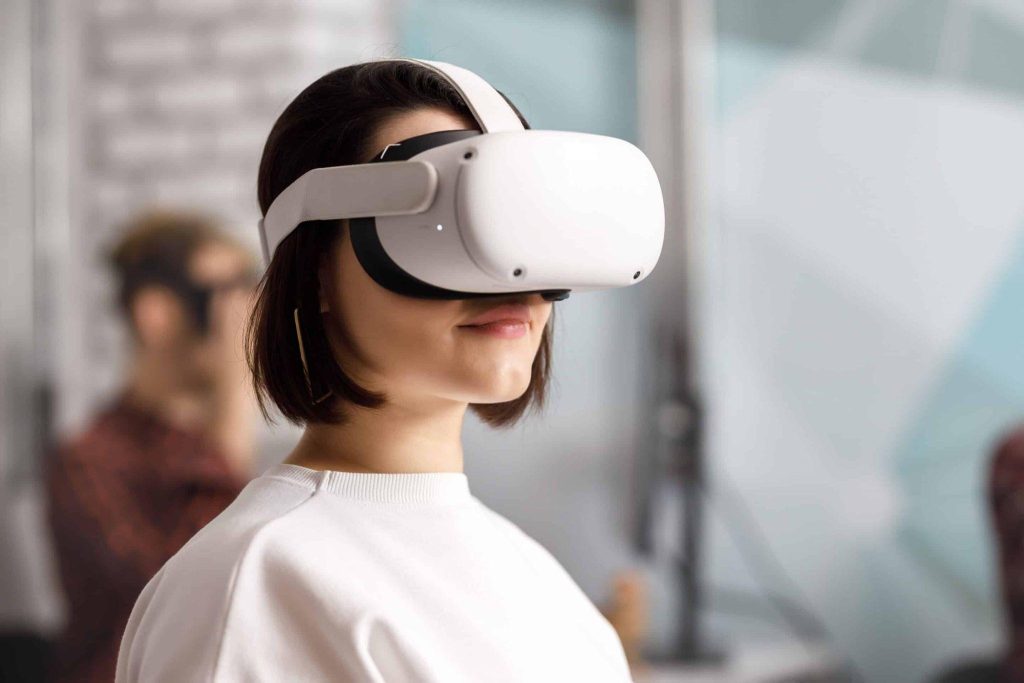
The landscape of Extended Reality (XR) the umbrella term that covers virtual reality (VR), augmented reality (AR), and mixed reality (MR), is having a coming-of-age moment. Thanks to significant advancements that have made hardware more powerful and practical, XR headsets are moving beyond gaming and could soon become a staple in hospital rooms.
The transformation of XR technology
In the early years of this technology, XR devices required powerful, high-end computers to run smoothly and had graphics that left the users wanting a lot more. The hardware itself was hard to use, heavy, uncomfortable and very cost-prohibitive limiting any practical applications outside of research centres and mainly used for gaming and entertainment.
Today’s XR headsets are lightweight, wireless, and affordable making this technology ready for widespread adoption in enterprise settings, like hospitals. The massive potential of this computing platform has garnered the attention of big tech players who have recognised the vast potential that lies beyond gaming and entertainment. Companies like Apple, Meta, ByteDance, and HTC are not only advancing the technology forward but are also creating ecosystems that support enterprise adoption making XR technology more accessible and practical for businesses. This shift is supported by a wealth of clinical studies and real-world applications demonstrating the efficacy of XR within healthcare.
2D vs 3D is it actually better?
The immersive nature of 3D environments captures attention more effectively, facilitating a deeper level of interaction and emotional connection. This heightened engagement and lack of distraction has been shown to lead to quicker therapeutic effects as patients are more focused and involved in their treatments.
Research shows that the sense of presence of virtual reality environments generates greater emotional arousal and more neural activity when compared to similar 2D ones. Attention is a vital part of any therapeutic intervention from mindfulness to therapy so 3D has the potential to be the medium of delivery as headset adoption becomes more ubiquitous in healthcare.
A brief virtual escape or more?
Using this technology to deliver immersive experiences that make hospital stays less daunting and more enjoyable is one area that can make a real societal impact. The ability to transport patients out of the confines of their hospital rooms to a serene beach, a tranquil forest, or even the moon seems to have broad appeal even for people who are not tech-savvy. This immersive distraction can significantly reduce anxiety and stress, providing a mental getaway that promotes enhanced well-being. For children, this means transforming a sterile environment into a magical adventure, making treatments and hospital stays less frightening and more welcoming.
Using immersive technology and gamification can further motivate and engage patients to foster more positive treatment outcomes without the need for a therapist. The infusion of game mechanics and game design techniques into proven treatments like Cognitive Behavioural Therapy ( CBT ) is making access to care more affordable and accessible while making treatments genuinely interesting.
Novobeing: A Pioneer in XR Wellness Solutions
Novobeing is one XR platform that helps healthcare providers deliver on-demand wellness and therapeutic experiences to patients. By seamlessly integrating into hospital rooms, Novobeing offers therapeutic programs that reduce stress, alleviate pain, and promote overall well-being.
The company provides an all-inclusive solution that includes user-friendly software, Meta Quest hardware, and accessories to make enterprise implementation easy. Backed by rigorous clinical research and partnerships with premier hospitals like Mass General, Novobeing is already delivering effective and engaging solutions that are transforming the lives of thousands of hospitalized patients. Novobeing states that they are conducting clinical research that explores how the use of their XR platform can potentially lead to faster recoveries, shorter hospital stays, and reduced healthcare costs.
Conclusion
The integration of XR headsets into hospitals is evolving, powered by advancements in hardware, growing clinical evidence and disruptive start-ups. Today, numerous leading hospitals already use XR headsets to make the journey to recovery a more humane and compassionate experience. Only time will tell if we will see this as an industry-standard device in every room but it’s safe to say most people would much rather “transport” to three-dimensional wellness experiences than to stare at the four walls of their hospital room if given the choice.
Information contained on this page is provided by an independent third-party content provider. Binary News Network and this Site make no warranties or representations in connection therewith. If you are affiliated with this page and would like it removed please contact [email protected]



Comments